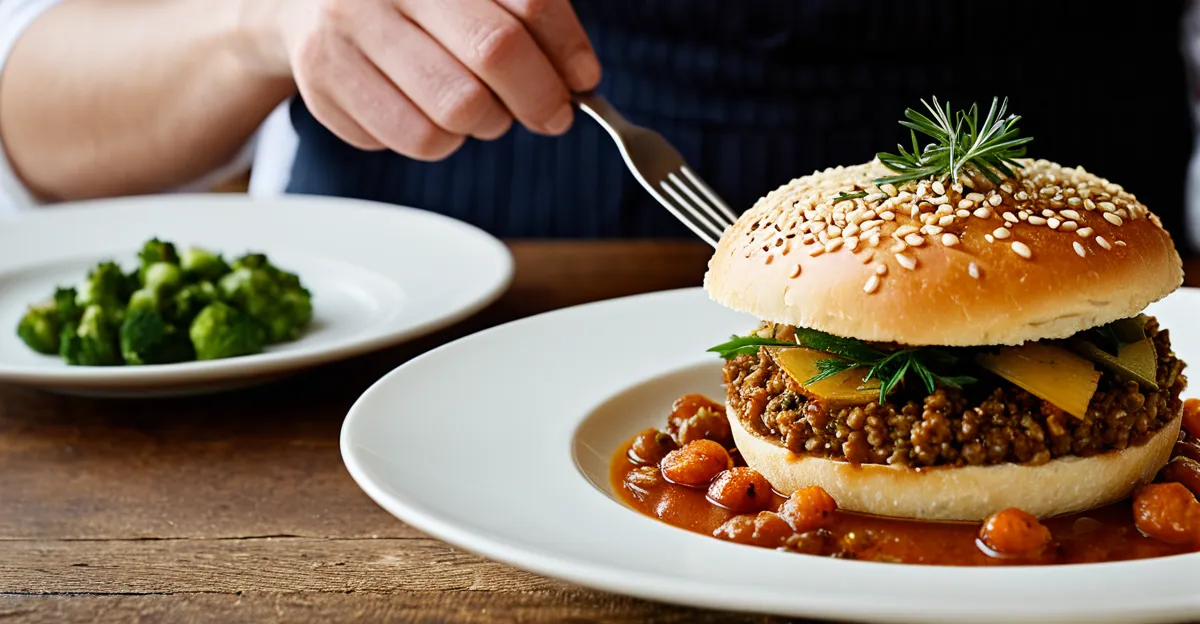Overview of Classic British Dishes
Traditional British cuisine holds a prominent place in the UK’s cultural heritage, reflecting centuries of history and regional diversity. Classic British recipes often showcase hearty, comforting meals made from accessible and seasonal ingredients. The essence of British food staples lies in simplicity and robust flavours achieved through time-honoured cooking methods such as roasting, slow-cooking, and baking.
Key ingredients frequently used in traditional British cuisine include root vegetables like carrots and potatoes, lamb and beef cuts, fresh fish, and sturdy grains such as barley or oats. These ingredients support the distinct character of iconic dishes through both their quality and the method of preparation. For example, slow roasting meat in a roast dinner allows flavours to develop deeply, creating the rich, satisfying taste British cooking is known for.
Additional reading : How Can British Cooking Techniques Be Adapted for Vegan Recipes?
Some of the most beloved classic British recipes include shepherd’s pie, a dish combining minced lamb or beef with a mashed potato topping, baked until golden. Fish and chips remain a national favourite, showcasing battered white fish fried to crispy perfection, paired with thick-cut chips. The Sunday roast dinner, featuring roasted meat, seasonal vegetables, and Yorkshire pudding, exemplifies the heart of British food staples, bringing families together around the table.
These dishes not only satisfy nutritionally but also serve as marks of tradition and celebration, making traditional British cuisine enduringly relevant and beloved.
Also read : How can you bake a traditional Cornish pasty at home?
Understanding Modern Dietary Preferences
Traditional British cuisine, though rich and hearty, now intersects with a diverse range of dietary preferences that shape contemporary eating habits in the UK. Today, many individuals seek vegetarian, vegan, gluten-free, or low-fat options that align with their health goals or ethical choices. This shift reflects a broader awareness of nutrition and well-being, alongside a desire to accommodate food allergies and intolerances.
For instance, vegetarian and vegan diets have risen prominently, encouraging adaptations of classic British recipes that typically rely on meat or dairy. Plant-based eating not only suits personal ethics but often aligns with environmental concerns. Gluten-free diets also respond to medical needs such as celiac disease or gluten sensitivity, requiring careful selection of ingredients to substitute common wheat-based staples without compromising texture or flavour.
Balancing these modern dietary demands with British food staples is crucial. It involves rethinking traditional meal compositions while honouring their flavour profiles and cultural significance. Adapting recipes to be both accessible and nutritious ensures that classic dishes remain relevant and enjoyable across different lifestyle choices. By embracing these evolving preferences, cooks can offer inclusive and health-conscious versions of beloved British fare without diminishing its identity.
Practical Ingredient Substitutions for British Recipes
When adapting classic British recipes to modern diets, choosing the right ingredient substitutes is key to preserving flavour and texture. For hearty mains such as shepherd’s pie or steak and kidney pie, plant-based options like lentils, mushrooms, or textured vegetable protein effectively replicate the richness of minced meat. These substitutes maintain the dish’s structure and satisfy the traditional palate, making them excellent choices for vegan or vegetarian versions.
In desserts like trifle and sticky toffee pudding, dairy and egg substitutes enhance accessibility without compromising indulgence. For instance, coconut cream or almond milk replaces heavy cream, while flaxseed or aquafaba serve as egg alternatives, providing moisture and binding properties essential to the desserts’ texture. These dairy-free and egg-free swaps enable enjoyment of British favourites for lactose-intolerant or vegan individuals.
Gluten-free alternatives are particularly important for battered fish, pastries, and bread-based recipes integral to British food staples. Using rice flour or chickpea flour instead of wheat flour creates crispy batters reminiscent of traditional fish and chips. Pastries can be recreated with gluten-free blends combining rice, potato, and tapioca starches to mimic flakiness. Bread substitutes employing gluten-free grains ensure sandwiches and crumbs retain familiar taste and consistency.
By thoughtfully implementing these healthier swaps, cooks can honour classic British dishes’ cultural significance while making them inclusive and suitable for diverse dietary needs. The use of well-chosen ingredient substitutes bridges tradition and modern nutrition, allowing everyone to partake in beloved British cuisine.
Adapting Popular Dishes for Modern Diets
Adapting classic British recipes to modern dietary needs involves careful reimagining to maintain tradition while embracing new food choices. Vegan British recipes thoughtfully replace animal-derived ingredients with plant-based alternatives to preserve texture and flavour. For example, using mashed cauliflower or seasoned jackfruit in shepherd’s pie can replicate the hearty feel previously provided by minced lamb or beef, while adding nutritional benefits. Similarly, vegetarian adaptations often incorporate legumes, mushrooms, or cheeses to enrich dishes like steak and kidney pie without sacrificing satisfaction.
When it comes to lowering fat and calories, healthy British meals can be crafted by adjusting cooking techniques and ingredient choices. Roasting vegetables using minimal oil or substituting cream with lighter bases such as yogurt or nut milks preserves the delicious aromas and mouthfeel of traditional recipes. Techniques like grilling fish instead of frying one improve nutritional profiles while keeping iconic dishes appealing. These lower-fat and calorie-conscious adaptations ensure that British food staples remain indulgent yet mindful of modern health goals.
Gluten-free twists on British comfort foods play an essential role in making beloved meals accessible without compromising authenticity. Batter for fish and chips can be made with rice or chickpea flour to achieve the familiar crispiness, while gluten-free pastry blends deliver flaky crusts for pies and pasties. Bread alternatives utilizing gluten-free grains ensure that sandwiches or crumb toppings stay true to texture expectations. These gluten-free adaptations allow those with dietary restrictions to enjoy traditional taste experiences fully.
Overall, creating vegan, vegetarian, low-fat, and gluten-free versions of British classics requires balancing innovation with reverence for traditional British cuisine. By integrating thoughtful substitutes and modern techniques, cooks can uphold the integrity of British food staples while responding to evolving dietary preferences, ensuring these dishes continue to delight diverse palates.
Maintaining Authentic Flavour and Presentation
Ensuring authenticity when adapting classic British recipes for modern diets requires meticulous attention to both flavour and presentation. The goal is to retain the traditional taste that defines British food staples while incorporating contemporary ingredients or techniques. This balance is achieved through several culinary strategies.
First, flavour preservation relies heavily on replicating the original seasoning profiles and cooking methods. For instance, slow roasting or braising remains essential for developing the deep, hearty flavours characteristic of dishes like roast dinners or shepherd’s pie. When substituting ingredients—such as using plant-based proteins instead of meat—it’s crucial to season carefully with herbs like thyme, rosemary, and parsley, which are staples in traditional British cuisine. These herbs form the backbone of the familiar taste and aroma.
Modern cooking techniques also help maintain both texture and moisture. Techniques such as gentle steaming or sous-vide can keep vegetables tender yet firm, complementing the textures expected in British staples. Utilizing these approaches allows dishes, such as vegetable sides or vegan protein components, to align closely with their traditional counterparts in mouthfeel and appearance.
Presentation plays a vital role in sustaining the cultural experience of British meals. For example, Yorkshire pudding should be crisp and risen, whether made with traditional flour or gluten-free alternatives. Similarly, the layering in a trifle or the golden crust on a pie must visually echo the original dishes. Through careful method selection and ingredient choice, modern interpretations preserve the aesthetics that connect diners to heritage.
Enhancing traditional recipes with subtle use of contemporary seasonings, like smoked paprika or nutritional yeast, can enrich flavour without overshadowing classic elements. These additions provide depth, appealing to evolving palates, while respecting the roots of classic British recipes.
In summary, preserving authenticity while adapting to modern dietary needs hinges on combining traditional cooking methods, precise seasoning, and faithful presentation. This approach ensures that beloved British food staples remain recognizable, enjoyable, and relevant.



